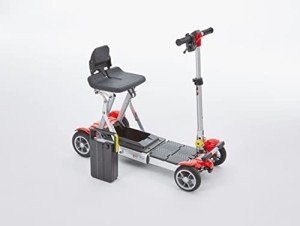Why Is This Mobility Aids So Beneficial? In COVID-19

Understanding Mobility Aids: Enhancing Independence and Quality of Life
As society continues to age and people significantly seek methods to preserve independence, the need for mobility aids has never ever been more significant. sheronlipari.top , which include a series of devices created to assist individuals with walking or walking around, play an important function in promoting mobility, boosting security, and enhancing total lifestyle. This post will check out the numerous types of mobility aids, their advantages, factors to consider for choice, and respond to some regularly asked questions.
Types of Mobility Aids
Different mobility aids are available, each designed to attend to particular requirements. The following table summarizes a few of the most common types of mobility aids and their features.
| Type of Mobility Aid | Description | Best Suited For | Key Features |
|---|---|---|---|
| Canes | A handheld stick offering support and balance. | Individuals who need very little assistance. | Light-weight, portable, adjustable height. |
| Walkers | Four-legged frames supplying stability. | Those requiring substantial assistance while strolling. | Foldable, some with wheels, included safety functions. |
| Rollators | Wheeled walkers with a seat for resting. | People needing mobility with the option to rest. | Brakes, baskets for individual products, adjustable height. |
| Wheelchairs | Chairs with wheels for people with limited mobility. | Those unable to stroll or requiring extensive support. | Manual or powered alternatives, customizable seating. |
| Scooters | Motorized devices for larger ranges. | Individuals with restricted endurance but needing independence. | Different sizes and styles, often portable. |
| Crutches | Support devices placed under the arms or forearms. | Individuals recovering from lower limb injuries. | Adjustable, lightweight, requires upper body strength. |
| Stairlifts | Mechanical devices for moving in between floorings. | Users dealing with challenges in multi-level homes. | Customizable for different staircases, automated. |
Advantages of Mobility Aids
Mobility aids provide a selection of benefits that can substantially boost the lives of individuals dealing with mobility difficulties. Some significant advantages include:
- Increased Independence: Mobility aids empower people to move freely without counting on others for support, consequently improving their confidence and self-confidence.
- Improved Safety: Using mobility aids can minimize the danger of falls and injuries, especially for older adults or those with balance concerns.
- Improved Quality of Life: By facilitating mobility, individuals can engage in social activities, go to occasions, and delight in life more completely, adding to much better emotional and psychological health.
- Rehab Support: After surgery or injury, mobility aids offer essential support and stability, assisting in recovery and rehabilitation procedures.
- Accessibility: Many mobility aids are designed to be utilized both indoors and outdoors, ensuring that individuals can navigate various environments with ease.
Elements to Consider When Choosing Mobility Aids
Picking the suitable mobility aid needs cautious consideration of several factors, consisting of:
| Factor | Considerations |
|---|---|
| User's Needs | Assess the level of mobility required; consider whether the user needs temporary or long-lasting assistance. |
| Physical Limitations | Assess the user's strength, balance, and coordination to determine the very best kind of aid. |
| Setting | Think about the main environments where the aid will be used, such as home, outdoors, or specific surfaces. |
| Weight and Portability | Ensure that the picked device is workable regarding mobility and storage, particularly for outside use. |
| Spending plan | Mobility aids been available in a range of prices; consider insurance coverage and readily available financing options. |
| Adjustability | Pick aids that can be adjusted for height and convenience to accommodate growth or changing needs. |
Regularly Asked Questions About Mobility Aids
1. How do I understand if I need a mobility help?
Many factors can indicate the need for a mobility help, such as problem walking or balancing, fatigue while standing, or a recent surgical treatment affecting mobility. Consulting with a healthcare specialist can provide assistance customized to private requirements.
2. What kinds of mobility aids are covered by insurance?
Protection varies between insurance providers, however a lot of offer alternatives for durable medical equipment, which typically includes wheelchairs, walkers, and some types of canes. Talk to your insurance service provider for particular protection information.
3. Can mobility aids be utilized outdoors?
Yes, many modern-day mobility aids are created for outdoor use. Rollators, scooters, and some walkers are equipped with features for stability and ease of usage on different surface.
4. How do I preserve my mobility help?
Routine upkeep involves inspecting for any wear and tear, ensuring that parts such as wheels, brakes, and frames are functioning correctly, and cleaning up the equipment as needed. Following the manufacturer's standards is vital for safety.
5. Is there a risk of ending up being depending on mobility aids?
While some users may become reliant on mobility aids, they are designed to promote self-reliance and mobility. Gradually utilizing a mobility help can boost confidence and aid keep physical strength and coordination.
Mobility aids are invaluable tools that empower individuals to overcome physical difficulties, promoting independence and boosting lifestyle. By understanding the various types of mobility aids readily available, their advantages, and essential elements for factor to consider, families and caretakers can make informed choices that best fulfill the needs of their enjoyed ones. With the right assistance, those with mobility challenges can lead fulfilling and active lives, free to check out the world around them.

